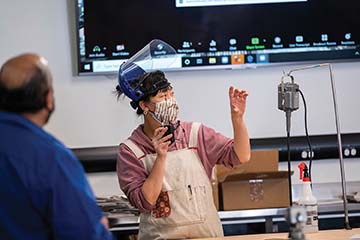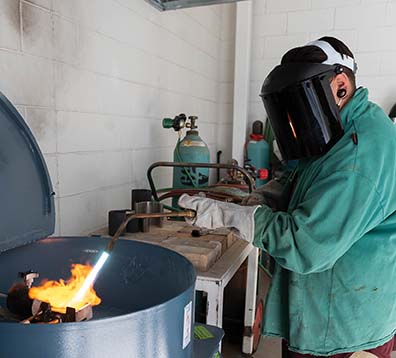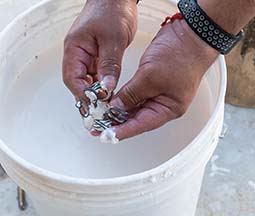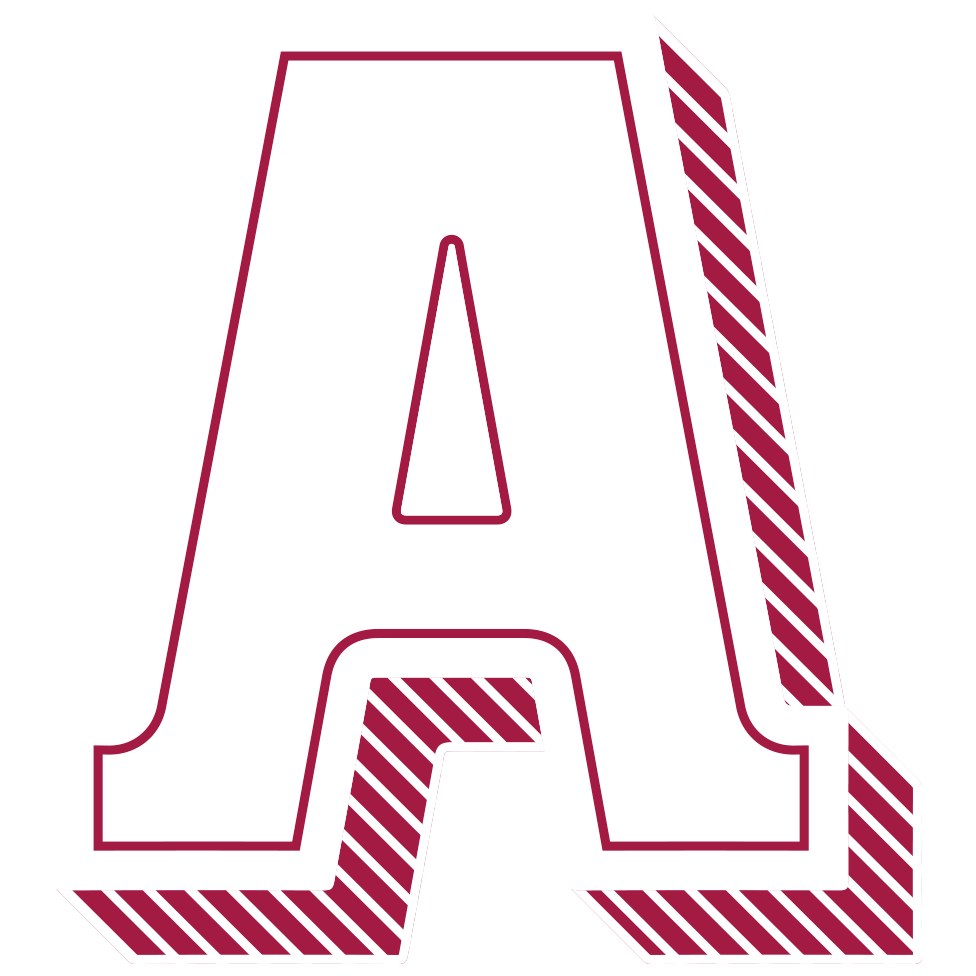The forced isolation of the pandemic inspired a group of NMSU art students to link a time-worn tradition involving the mail with a clever turn of phrase to create a shared experience with distant student artists. Instead of letters, students created and exchanged metal brooches with students from three universities. They showcased their work in an exhibit titled “Pin Pals” in spring 2021.
Metalworking and jewelry students from NMSU, University of Texas at El Paso, Stephen F. Austin State University and Dallas College partnered in a semester-long technical process to create and trade metal brooches.
“I wanted to be a part of this project to let our students know there are communities outside of our university, especially with our current time of isolation,” says Motoko Furuhashi, art assistant professor in the NMSU College of Arts and Sciences.
The students created original designs by carving wax through the traditional process of lost wax casting. Each artist casted original forms in bronze and created rubber molds of the original.
“Getting the chance to collaborate with students from our school and the other colleges has been amazing. I have never done anything like this before,” says senior art student Tessa Bond. “Seeing the variety of different ways students approached making a pin gave me a deeper understanding of how metal casting works and the possibilities there are.”
Students made a brooch for all their classmates and mailed their brooches to the three participating universities. Due to the ongoing pandemic, classes were mostly online with only some in-person meetings.
“Hybrid classes were challenging especially for casting which is a heavily technical process,” Furuhashi says.
With limited access to the studio, students were asked to work independently at their home studios and meet in-person for all scheduled activities.
“Many of us hadn’t made pins before so it was a completely new experience that required a lot of learning,” Bond says. “Motoko and graduate student Ger Xiong made videos for us to watch so we could learn the process and were always very helpful when we had questions.
“They are great teachers,” Bond says. “Even though we were mostly online, my fellow classmates were always ready to help and give input, which I think helped build our sense of community as artists.”
Furuhashi and the professors from the other universities created project guidelines, technical tips and a “Pin Pals” Symposium, sharing their personal artwork to help their students create their pins.
Despite never meeting her peers at the other universities in person, Bond still felt connected to them through their artwork.
“I think it is very exciting to share pins between schools because of the suspense of sending off these little pins you’ve worked so hard on and then the delight when the packages came in and you get to see the pins everyone else has made,” Bond says.
“I don’t think I’m alone in feeling like there is a connection with the students and instructors from these schools now,” Bond says. “Seeing their pins feels like seeing a part of them.”
Each school provided an exhibition space and kept the finished pin collection for their program’s permanent collection.
“In a time where we have not been able to travel and see one another, these tiny pins have traveled hundreds of miles in order to do what jewelry is often charged to do: bring joy and be a reminder of community,” Furuhashi says.




Dove Hall, Room 212
305 N. Horseshoe Drive
Las Cruces, NM 88003